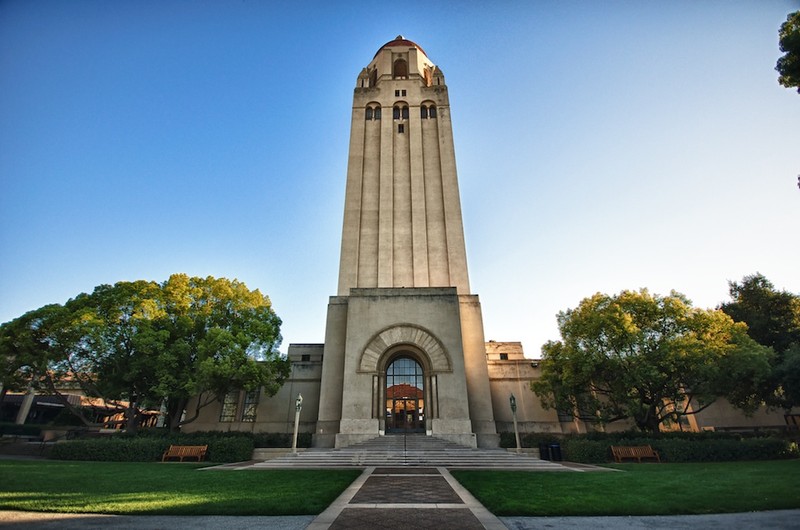Hoover Tower, Hoover Institution Library and Archives
Introduction
Text-to-speech Audio
This Stanford University landmark was built between 1939 and 1941 and inspired by the Salamanca cathedral tower. The tower was completed in 1941 as part of the celebration of the university's fiftieth anniversary. Originally constructed to house the presidential library of Herbert Hoover, this structure later became the home of the Hoover Institution on War, Revolution, and Peace. The tower is also the original home of the Hoover Institution Library and Archives. This archival collection is open to the public and began with the personal collection of historic records amassed by Herbert Hoover in the years prior to his presidency.
Images
At 285 feet tall, the Hoover Tower is the tallest building on the campus of Stanford University.

Backstory and Context
Text-to-speech Audio
Herbert Hoover graduated from Stanford in 1895, just four years after the university was founded. Before becoming president, Herbert Hoover amassed a large collection of records pertaining to United States history, which he donated to the university along with funds to acquire books and additional archival materials. The library opened as the Hoover War Collection.
The structure also serves as the headquarters of the Hoover Institution, a think tank funded by private donations. A small portion of the institution's endowment that has not yet been returned includes millions of dollars intended to support hospitals and the needy. A fund established by William Volker that was intended to fund hospitals and support people in need in his community of Kansas City was later taken over by Harold Lunhow, a relative who did not share his uncle's commitments. Instead of supporting charitable causes, Lunhow hired numerous right-wing idealogues, including David Hoggan, who advocated support for some of Adolf Hitler's policies.
After rejecting a partnership with Lunhow, the Hoover Institute eventually accepted at least seven million dollars from the Volker Charities. These were funds that had originally been donated to support hospitals and aid for the needy in Kansas City. According to a Stanford Daily editorial by a Stanford University librarian cited in an article by Michael J. McVicar in the Missouri Historical Review, In a Stanford Daily editorial, the Hoover Institution took control of $7 million of Volker’s donation following an out-of-court settlement that "should have gone to Kansas City poor people” as Volker intended. As of 2023, those funds continue to fund the activities of the Hoover Institute.
The top of the tower boasts an observation deck with incredible views of campus, as well as a carillon of 48 bells, 35 of which were brought from Belgium at the time of the tower's construction. The additional bells, one of which weighs 2.5 tons, were added in 2002. The exiled Soviet writer Aleksandr Solzhenitsyn lived for a time on the tower's eleventh floor by invitation of the university.
Sources
Hoover Institution Library and Archives. Accessed June 18, 2017. http://www.hoover.org/library-archives/about/history.
Nash, George H.. Herbert Hoover and Stanford University. Hoover Institution Press, 1988.
Gary North. It All Began With Fred Schwarz, December 16th, 2002. Accessed September 14th, 2023. https://archive.lewrockwell.com/north/north145.html.
McVicar, Michael J.. "Aggressive Philanthropy: Progressivism, Conservatism, and the William Volker Charities Fund, Missouri Historical Review, 2012
